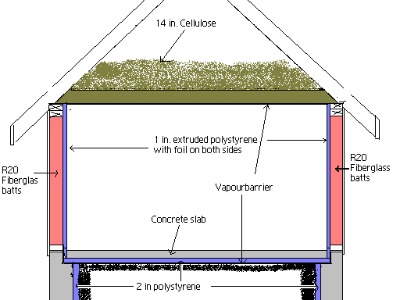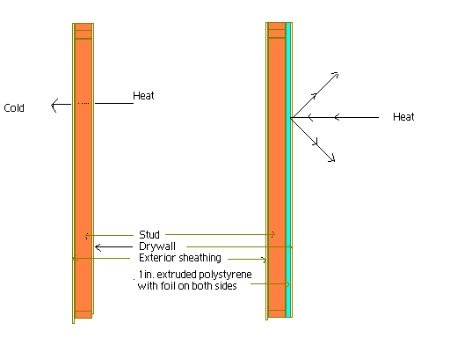Insulation And Your Home
There are a number of insulation's being used today, but I am only going to mention the ones that I used in the construction of my home.
Preparing your home to keep out the cold and heat is a very important part of your home construction. Researching the subject thoroughly is time well spent.
The money spent at this stage of your construction will be minimum compared to the money it will save you over the length of your mortgage.
There are a lot of pros and cons to be considered when choosing the right one for your home. R value is one of the things to be considered. Without getting to technical, the R value is the ability of insulation to resist heat flow.
Here is a list of the ones I used with the rated R value per inch of thickness.
Extruded polystyrene ......R 5 per in...(A rigid insulation)
Expanded polystyrene .....R 4 per in...(A rigid insulation)
Cellulose ........................R 3.7 per in.
Fiberglass ......................R 3.14 per in.

This illustration shows what type of insulation I used and where I used them.
My choices on what types to use was based on a number of factors .
To use cellulose in the walls,although this was my first choice, required special equipment and professional personal to install it.
I decided to go with fiberglass in the walls and blown in cellulose in the attic because I could install this myself.
Fiberglass , if it is compressed will drop in R value, so it is important not to compress it when installing.
Fiberglass is easy to install if you take your time and make sure all areas of the wall cavity are filled such as behind electrical boxes ,plumbing pipes and other objects.
Pieces can be cut to fill gaps or where batts are to large,they can be cut to size.
I have found a utility knife with the blade extended works great for cutting the batts.
In the illustration above, you will noticed I placed 4x8 sheets of 1in.extruded polystyrene with foil bonded to both sides. This added R 5 to the wall, the foil served to reflect the heat on the inside and the cold on the outside .When the joints were tape ed the foil served as the vapor barrier for the walls. The vapor barrier prevents the moisture from the inside of the house entering the wall cavity.
There was,however another purpose for this insulation,it created a thermal break.

This graphic shows how the use of the extruded polystyrene created a thermal break.
The studs in the walls are a source of heat loss. Wood has a R value of 1.25 per in. so a 2x 6 stud has a R value of 6.875. But there is also a loss of heat due to conduction through the stud to the outside. By placing the extruded polystyrene on the inside it creates a thermal break between the inside and the out side cutting down on the heat loss through the studs by conduction and increasing the R value through the stud.
What worked for me may not necessarily work for.Your type of construction may be different than mine and require different materials such as ICF or SIP construction. What ever the case this is one area you should not skimp on,the pay back will be over time and well worth it.
Return from Insulation toHome page
Go to Steps to building a Home